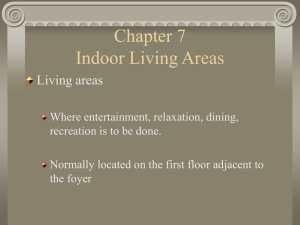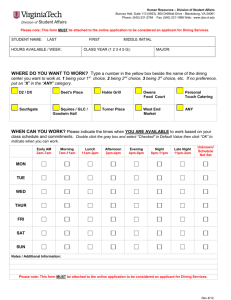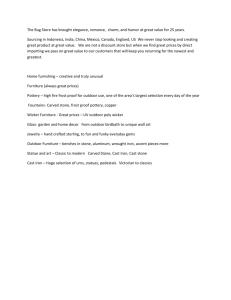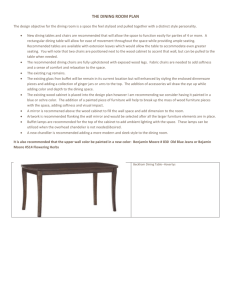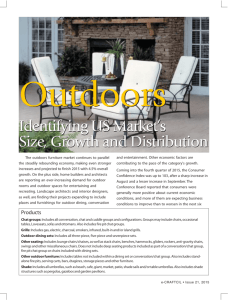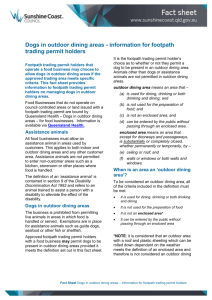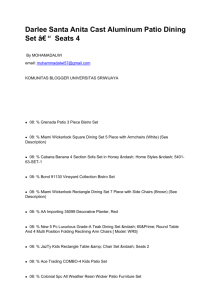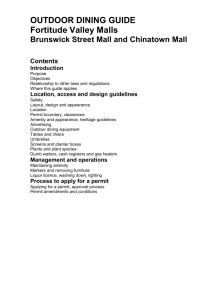Access and Inclusion Strategy - Case Study
advertisement
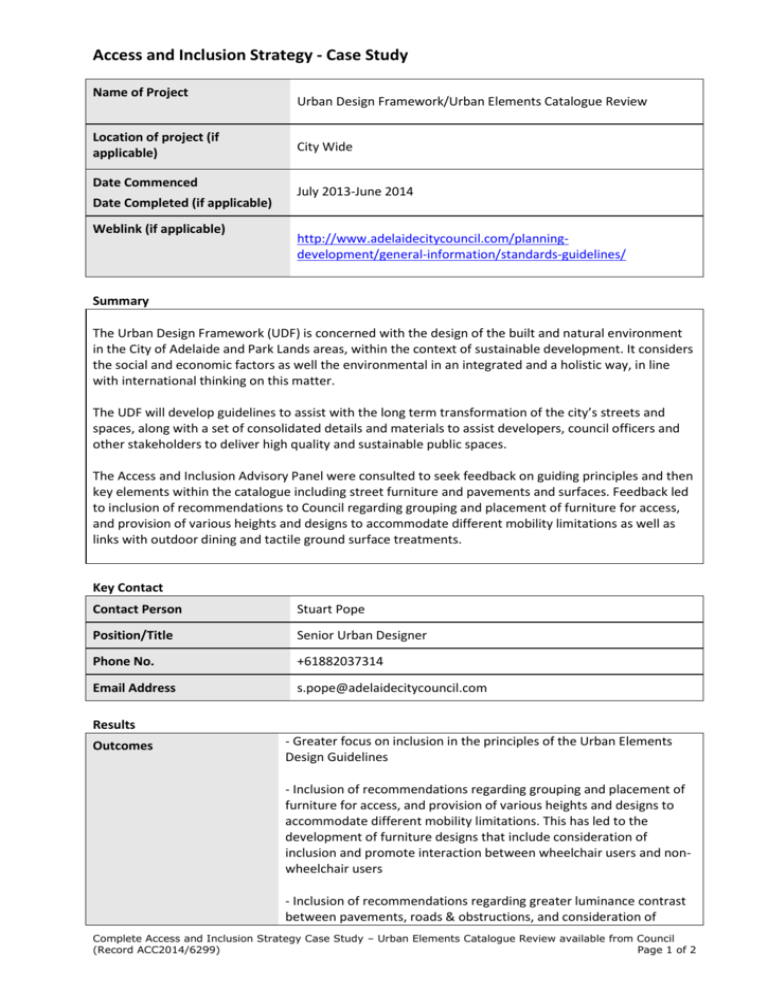
Access and Inclusion Strategy - Case Study Name of Project Location of project (if applicable) Date Commenced Date Completed (if applicable) Weblink (if applicable) Urban Design Framework/Urban Elements Catalogue Review City Wide July 2013-June 2014 http://www.adelaidecitycouncil.com/planningdevelopment/general-information/standards-guidelines/ Summary The Urban Design Framework (UDF) is concerned with the design of the built and natural environment in the City of Adelaide and Park Lands areas, within the context of sustainable development. It considers the social and economic factors as well the environmental in an integrated and a holistic way, in line with international thinking on this matter. The UDF will develop guidelines to assist with the long term transformation of the city’s streets and spaces, along with a set of consolidated details and materials to assist developers, council officers and other stakeholders to deliver high quality and sustainable public spaces. The Access and Inclusion Advisory Panel were consulted to seek feedback on guiding principles and then key elements within the catalogue including street furniture and pavements and surfaces. Feedback led to inclusion of recommendations to Council regarding grouping and placement of furniture for access, and provision of various heights and designs to accommodate different mobility limitations as well as links with outdoor dining and tactile ground surface treatments. Key Contact Contact Person Stuart Pope Position/Title Senior Urban Designer Phone No. +61882037314 Email Address s.pope@adelaidecitycouncil.com Results Outcomes - Greater focus on inclusion in the principles of the Urban Elements Design Guidelines - Inclusion of recommendations regarding grouping and placement of furniture for access, and provision of various heights and designs to accommodate different mobility limitations. This has led to the development of furniture designs that include consideration of inclusion and promote interaction between wheelchair users and nonwheelchair users - Inclusion of recommendations regarding greater luminance contrast between pavements, roads & obstructions, and consideration of Complete Access and Inclusion Strategy Case Study – Urban Elements Catalogue Review available from Council (Record ACC2014/6299) Page 1 of 2 design outcomes over and above standards including more regular kerb ramps where accessible parking is located. Additionally the provision of consistent tactile information for people who are vision impaired was raised as being important and is being addresses in the Framework - Discussion about the relationship with outdoor dining and fixed street furniture, these are seen as interchangeable by the public. Heard about how fixed furniture impacts on the inclusiveness of the dining experience because wheelchair users and people with mobility limitations find it difficult to sit alongside friends and family and the items often block the walkways outside of operating hours. Therefore fixed outdoor dining furniture is being addressed in the Framework and in the Outdoor Dining Guidelines to ensure consistency. Photos of current practice which requires upgrade to reflect new framework (as at October 2013) Photo: Crossing ramp directing people over side street adjacent to Waymouth Street. There are no TGSI on the crossing ramp and it doesn’t direct pedestrians to the crossing point on the other side. Photo: Outdoor dining tables and chairs outside two restaurants in Waymouth Street. A long table is positioned close to the footpath edge whereas the smaller yellow seating and tables are closer to the middle of the footpath. This is an inconsistent application of seating arrangements. Complete Access and Inclusion Strategy Case Study – Urban Elements Catalogue Review available from Council (Record ACC2014/6299) Page 2 of 2
